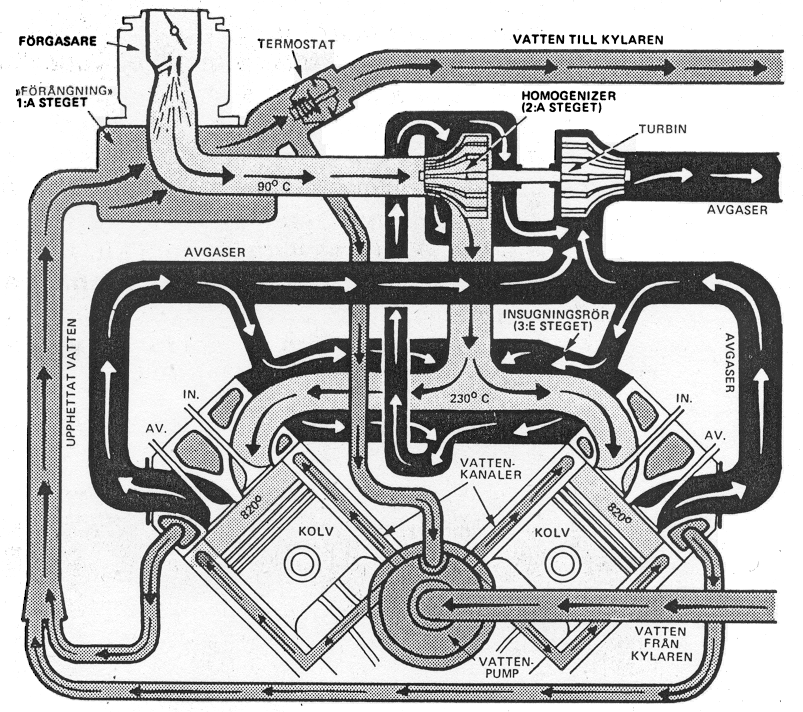Well, the pressure being constant, you want a cool mixture because it's more dense. That's true in the Otto cycle. You know: take air, compress it inside a cylinder at constant temperature, put heat into it to achieve expansion of cylinder, release.
Then, if you take a look at Yunick's engine, it's more like a Brayton cycle. You take air, compress and preheat it as much as you can, insert the compressed heated air into a cylinder, put heat into it and release. In this case, the "extra-fuel" you get is not through cooling the air, but simply by compressing it. Here is the picture in the link given before in this thread:

Notice you preheat a lot the air (over 200ºC) and you vaporize the fuel avoiding pre-ignition (or so they say... I'm puzzled by this: you could think gasoline would ignite easier if vaporized, but...).
For those that don't get the difference (I'm not sure I do...

), Mr.
Brayton's cycle is the one used in turbines, even if he himself only built IC engines. These engines by Brayton had a "bellow" that compressed the air (the fan of jet engines, or the "homogeneizer" of Mr. Yunick) and then injected it into a second cylinder where it was allowed to expand. Yunnick's engine uses as much heat from exhaust as possible to preheat the fuel and the turbo is more like a valve than any other thing: it gives you dense (pressurized) mixture, with a lot of fuel, and besides, it already has energy in the form of heat.
I'm not sure if this is the "homogeinizer" jet engines have, that allows them to vaporize the fuel and "hold" the flame simultaneously:




